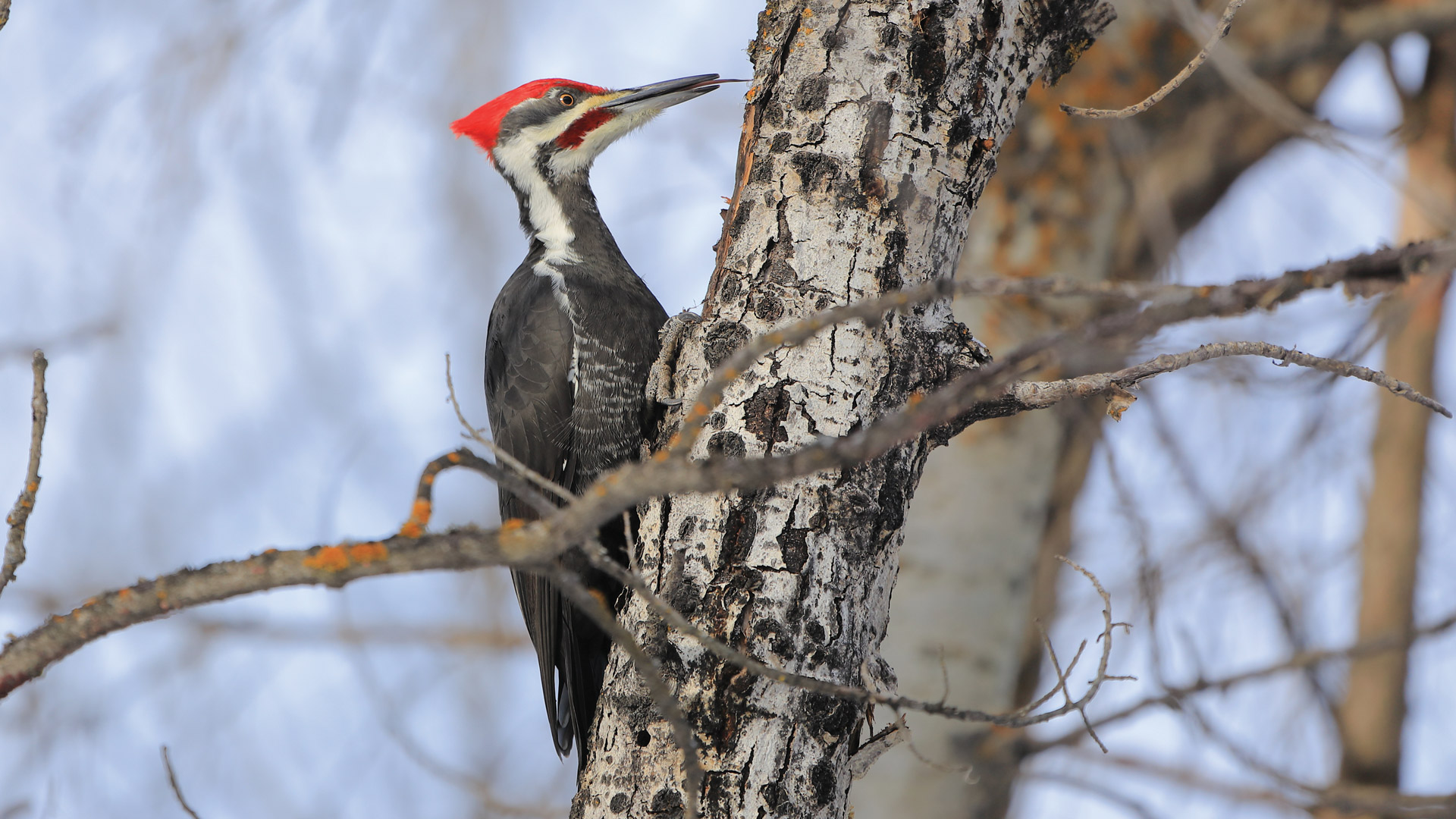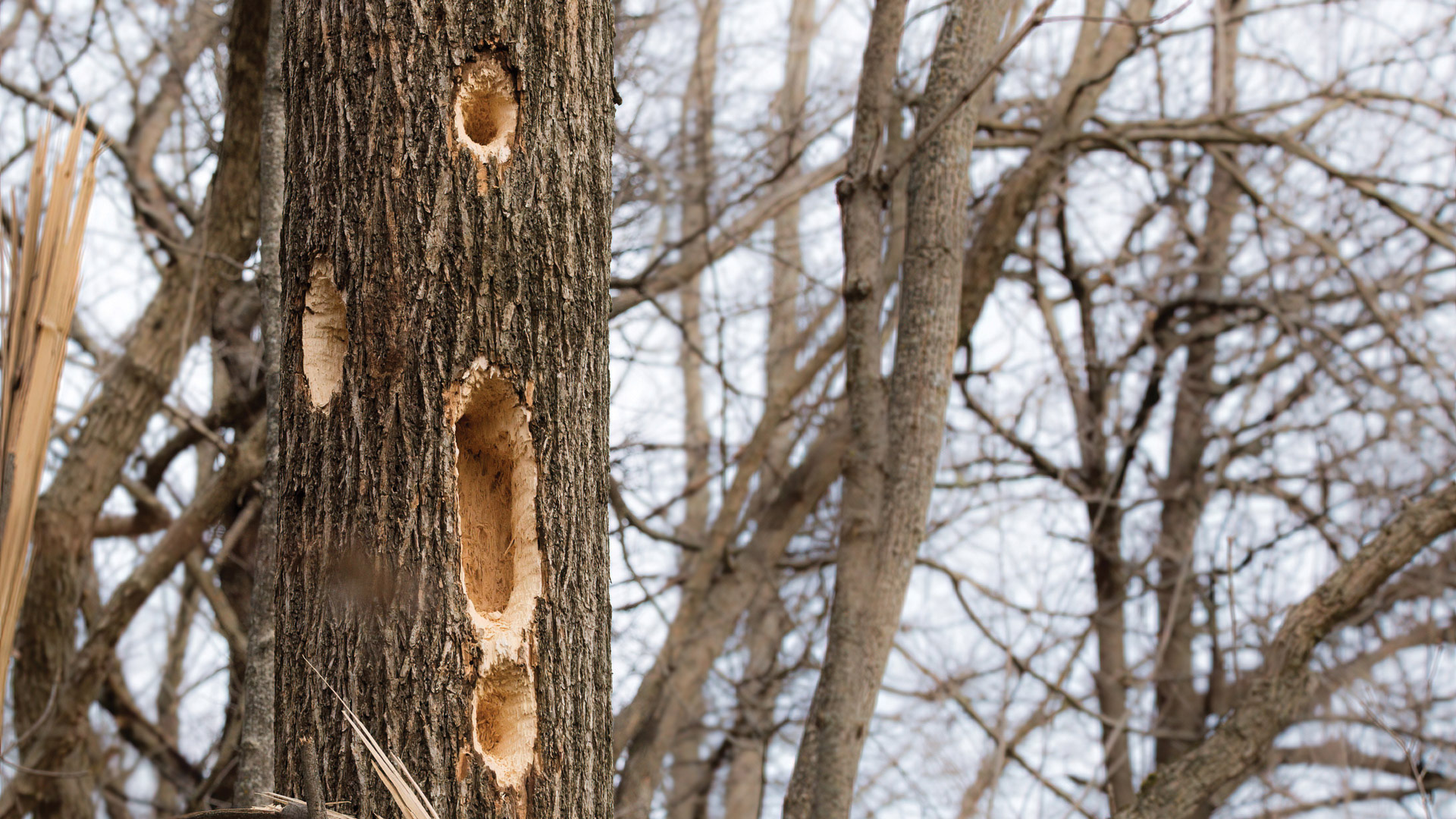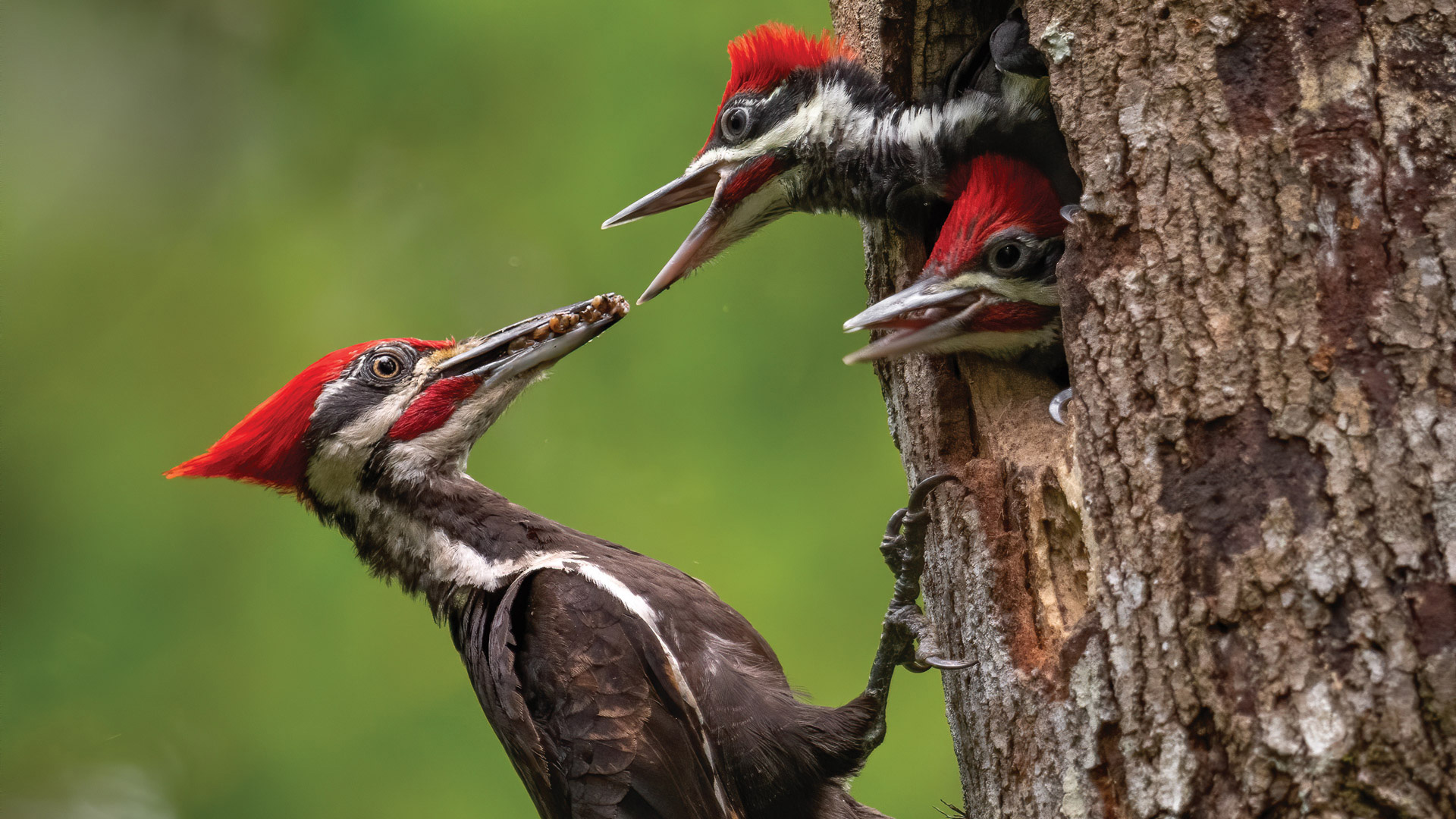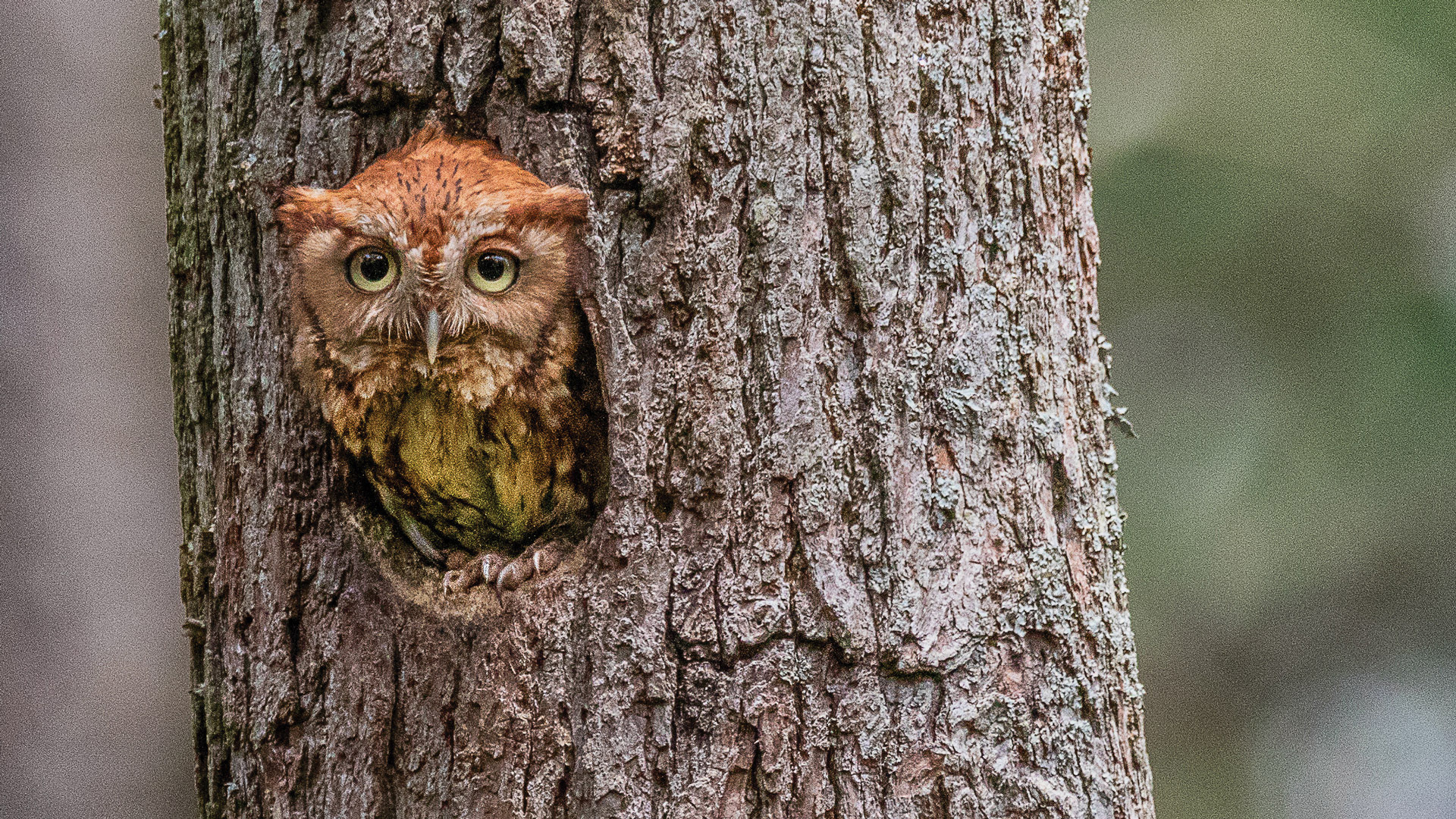Miscreants or Messengers?
If you see a Pileated Woodpecker at work, take it as a sign

Heed Their Warning
If you get bad news about one of your trees, kindly don’t shoot the messenger. Even if – especially if – they vandalize that very tree. It could save your life to heed their warning.
Although it’s captivating to watch a big prehistoric-looking woodpecker chisel away at a rotten snag in the forest, the same performance loses its charm when it jack-hammers a hole in your perfectly good tree. The thing is, no matter how healthy that tree may appear, it is definitely not sound and may in fact be dangerous. Your “vandal” is alerting you to this truth by installing windows in the tree trunk.

Identification
Native to southeastern Canada and a belt of boreal forest stretching to the Pacific coast, the pileated woodpecker (Dryocopus pileatus) is easy to recognize. Its prominent red crest (or pileatus, if you speak Latin) is a real attention-getter but its size sets it apart as well.
Assuming the ivory-billed woodpecker is extinct, our pileated is the largest woodpecker in North America, measuring 40-49 cm long with a 66-75 cm wingspan. Its body is mostly black with a strip of white down the throat.
Males and females are both red-crested but the male has an extra red stripe on the sides of its head. Patches of white are also visible as it flies in its distinctive undulating pattern.
A Special Appetite
Pileated woodpeckers excavate large cavities in dead trees in which to nest – so large that the tree sometimes ends up collapsing at the nest site. They also “mine” dead trees for larvae and pupae of wood-boring beetles. But these birds have a special appetite for carpenter ants, which is what sometimes lands them in backyards. As unsettling as it is to see wood chips raining down from your tree, that is the least of its problems.
It’s a lot of work for woodpeckers to chop holes in wood using only their lips, so you can bet there’s always a good reason for such activity. Their eyes are on a succulent prize in the middle of that hard outer shell, a tasty carpenter-ant soft interior. It’s sort of the bird equivalent of a lollipop with a chewy centre.

Carpenter Ants Signal Advanced Decay
Once we realize that a pileated only hack into a live tree if the trunk is packed with ants, it’s logical to figure that the next step is to kill those ants. The trouble is that won’t help at all. The ants are not the issue either.
In spite of their name, carpenter ants are unable to engage in woodworking projects using solid wood. They are so named (I’m pretty sure, anyway) because if they show up in your house it means you need a carpenter as opposed to an exterminator. Undoubtedly there is a crumbling sill plate, joist or another piece of rotten lumber that has attracted the ants. Carpenter ants can only infest damp, rotted wood.
Pileated woodpeckers aren’t after your trees; they’re in pursuit of an ant colony. In turn, ants aren’t ruining your tree but are signalling the presence of advanced decay within. Using insecticide on ants inside a tree will put all sorts of birds at risk — not to mention pets and children and is unlikely to completely eradicate the colony anyway. Most importantly, it will do nothing to slow the inexorable march of decay throughout your tree.
Avert Disaster
One memorable job from early in my career was extricating the trunk of a massive white pine from the attic of a historic house. The pine had snapped off about ten metres up and crushed the roof, harpooning some good-size branches into the bedrooms below. The cause of failure was a column of decay that had begun at an old wound site. Ants were present inside this section but were a symptom, not the problem. If only a pileated woodpecker had alerted the homeowner to the situation, disaster might have been averted.
If you ever see pileated woodpeckers “vandalizing” one of your landscape trees, be aware that decay lurks within it. Have an arborist evaluate it for mechanical integrity and overall health. Heartwood decay does not always mean a tree is doomed, but if it is destined to come down no matter what, one would prefer it happen in a controlled fashion.
You’re going to need an arborist
According to the Ontario Ministry of Natural Resources at least 38 bird species in the province depend in some way on tree cavities to survive. Primary excavators such as flickers, woodpeckers, chickadees and nuthatches are known to significantly reduce forest insect-pest populations during the dormant season as they feed on overwintering larvae, pupae and adult pests.
Their feeding sites and abandoned nest cavities are later used by tree swallows, wrens, kestrels, six species of owls and many other residents and migratory birds.
Because dead snags are critical to such species, it is highly beneficial to leave the lower trunk – as long as safety concerns are addressed – of a residential tree that has to be removed. Not only will this provide important habitat, but the homeowners may also get to observe bird species they otherwise would not get a chance to see.

A resident of Val-des-Monts, QC, Paul Hetzler is an ISA-Certified Arborist. He avoids trees and lollipops that have soft centres